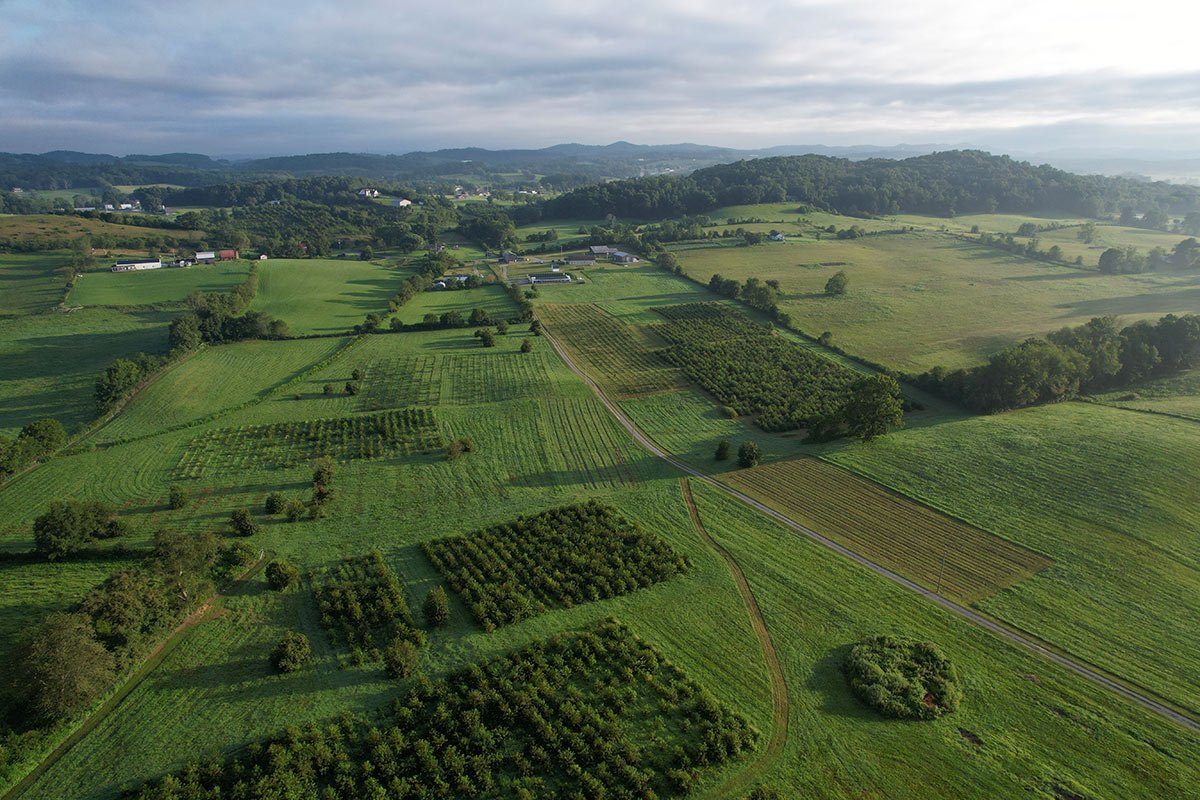
ROOTED IN RESTORATION
The Pennsylvania and New Jersey Chapter of The American Chestnut Foundation is on a mission to restore the American chestnut tree to its native range within the woodlands of eastern North America through research and education.
Our goal is to develop blight-resistant American chestnut trees, via backcross method of breeding, for the restoration of locally adapted breeding populations of the species in the forests of the mid-Atlantic. The completion of six backcrossed generations has established that this will not on its own allow us to restore the American chestnut to its natural niche in the forest. Research has shifted toward combining the strategies of breeding, biocontrol, and biotechnology.
The Chestnut Story
The American chestnut was once one of the most important trees in our eastern hardwood forests. It ranged from Maine to Georgia, and west to the prairies of Indiana and Illinois. It grew mixed with other species, often making up 25 percent of the hardwood forest. In the virgin forests of the Appalachian Mountains, the ridges were often pure chestnut. Mature trees could be 600 years old and average 4 to 5 feet in diameter and 80 to 100 feet tall. Specimens as large as 8 to 10 feet in diameter were recorded.
The American chestnut’s annual production of highly nutritious nuts was extremely reliable. At the turn of the 20th century it was ranked as one of the most important wildlife plants in the East. Many wildlife species depended extensively on them. Bear, deer, wild turkey, squirrels, many birds and small mammals – and once, the huge flocks of passenger pigeons – all waxed fat for the winter in the chestnut forests.
Eastern rural economies depended on the nuts as well. Livestock were fattened on them, and the nuts were a major cash crop for many families in Appalachia. Railroad cars full were shipped to the big cities for the holidays, because of the high demand for this finest-flavored of all chestnuts.
The tree was also one of the best for timber. It grew straight and tall, often branch-free for 50 feet. Loggers tell of loading entire railroad cars with boards cut from just one tree. Straight-grained, lighter in weight than oak and more easily worked, it was as rot-resistant as redwood. It was used for virtually everything – telegraph poles, railroad ties, heavy construction, shingles, paneling, fine furniture, musical instruments, even pulp and plywood.
Then the chestnut blight struck. First discovered in 1904 in New York City, the lethal fungus–an Asian organism to which our native chestnuts had very little resistance–spread quickly. By 1950, except for the shrub-like sprouts the species continually produces (and which also usually become infected), the American chestnut had virtually disappeared from eastern forests. Trees that have survived the blight are few and far between. While those that have survived are truly a beautiful sight to behold, they are disappearing quickly.
Multiple efforts are underway to bring this precious tree back. Recent developments in genetics and plant pathology promise that this magnificent tree will again become part of our natural heritage. The American Chestnut Foundation was created to coordinate a breeding program for the purpose of creating blight-resistant American chestnuts for eventual reforestation. TACF scientists are well on their way to developing a tree that is American in every way, with blight resistance borrowed from its Asian cousins.
Blight-resistant seeds and seedlings will not be available to the public for several more years. Meanwhile, individuals and organizations concerned about issues such as forest diversity and wildlife preservation are encouraged to plant chestnut seedlings that are not blight-resistant, for several reasons. First, planting seedlings is an important way to help preserve the chestnut genes that we might otherwise lose. It will also help call attention to the effort to bring back the tree. Also, by planting these seedlings, individuals and organizations gain knowledge about where and how to plant and care for chestnuts, in preparation for the widespread efforts that will be necessary once blight-resistant seeds and seedlings are available. Finally, it is important to note that if there are no blighted chestnut trees within a mile of where new seedlings are planted, blight is not likely to occur in the new trees for 10 to 20 years (20 to 40 feet of growth). Individual trees that do become blighted can be treated if the blight is caught and treated quickly.
Courtesy US Forest Service
Public Domain Image, National Parks Gallery
Courtesy of Ellen Messick. Photographer: William C. Vrooman
National Park Service, Public Domain
CHESTNUT CHAT
Chestnut Chat is a live webinar produced by The American Chestnut Foundation. This Chestnut Chat aired January 19, 2024 . Part 2 of this special Chestnut Chat series outlines the next steps after TACF’s decision to discontinue development of the Darling line of transgenic American chestnut trees. TACF employs a diversified approach to American chestnut restoration and collaborates with a wide variety of research partners. Science staff and guest panelists will share the many exciting research initiatives already underway and the role they will play in TACF’s mission to develop a disease-resistant and restoration-worthy American chestnut tree. Follow this link to The American Chestnut Foundation for more on our current strategies to restore the American chestnut.






